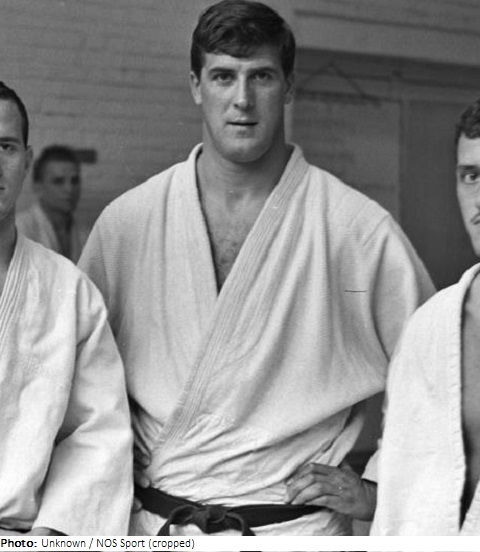With the introduction of judo to the Olympic program in 1964, Anton Geesink provided one of the surprises of the Games by winning the open class through defeat of Akio Kaminaga. Although Japan had won all other judo events, the loss of the blue riband open class saddened the hosts. Earlier, Geesink destroyed the myth of Japanese invincibility in judo by becoming the first non-Japanese judoka to win a world title in 1961. Between 1952 and 1967, Geesink won 21 European titles in the open and unlimited classes, and added another World Championship in 1965. He retired after his 1967 European title. Having also competed in wrestling (he attempted to compete in the 1960 Games), Geesink was a professional wrestler in Japan with All-Japan Pro Wrestling in 1973-78. His reputation as a strongman also earned him a small role as Samson in the Italian movie “I grandi condottieri”.
In his second career, he was a sport administrator, working for the European and International Judo Federations. He suggested the use of white and blue judogi (suits) to make the sport more attractive for viewers and easier for referees, although abandoning the traditional white met with resistance in Japan. Also a member of the Dutch NOC, he was co-opted into the IOC in 1987. During his membership, he served in several commissions, notably the Sport for All commission. In his role in the 2002 Winter Games Evaluation Commission, the “Friends of Anton Geesink Foundation” was found to have taken $5,000 from the Salt Lake City bid committee. Geesink was reprimanded, but allowed to stay with the IOC, which he did until his death in 2010.
In 1997, Geesink became part of the select group of judoka to receive the 10th (and highest) dan, although this honor was bestowed upon him by the International Judo Federation, not the Japanese Kodokan. He was also Dutch athlete of the year on four occasions (1957, 1961, 1964, 1965), one of the inaugural recipients of the Fanny Blankers-Koen Trophy, and he lived a street bearing his own name in his home town Utrecht.

 Netherlands
Netherlands NED
NED NED
NED NED
NED